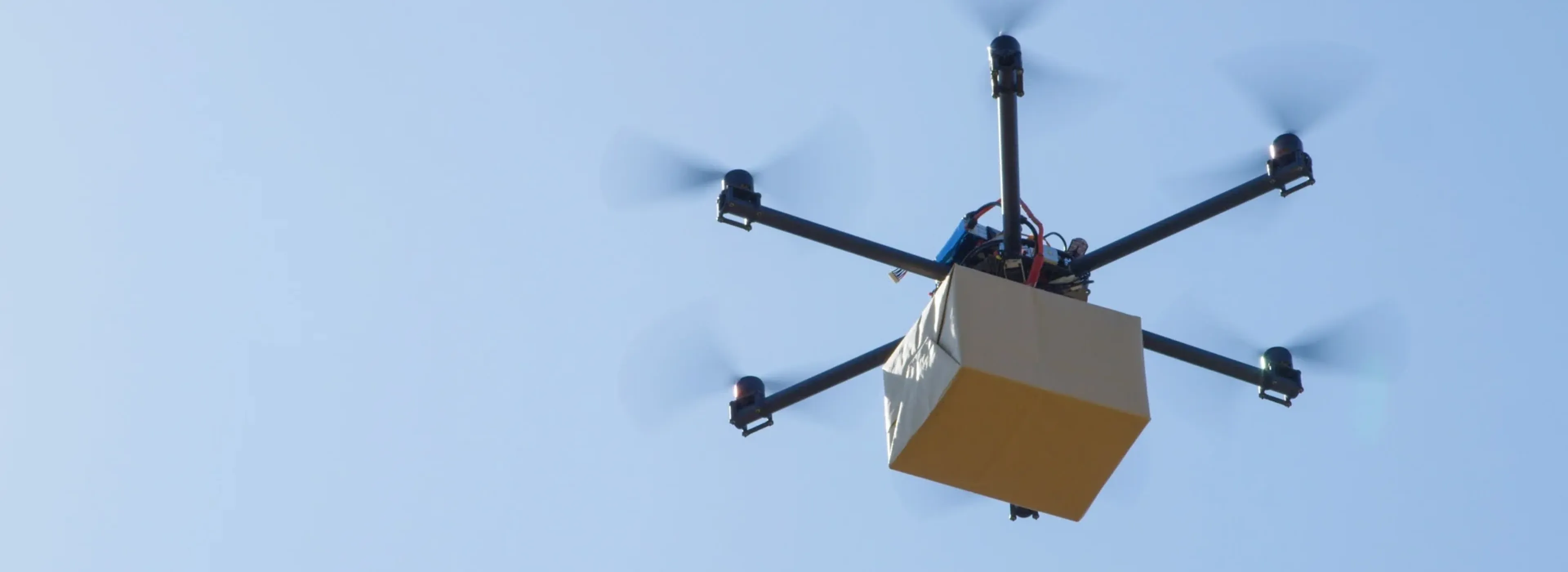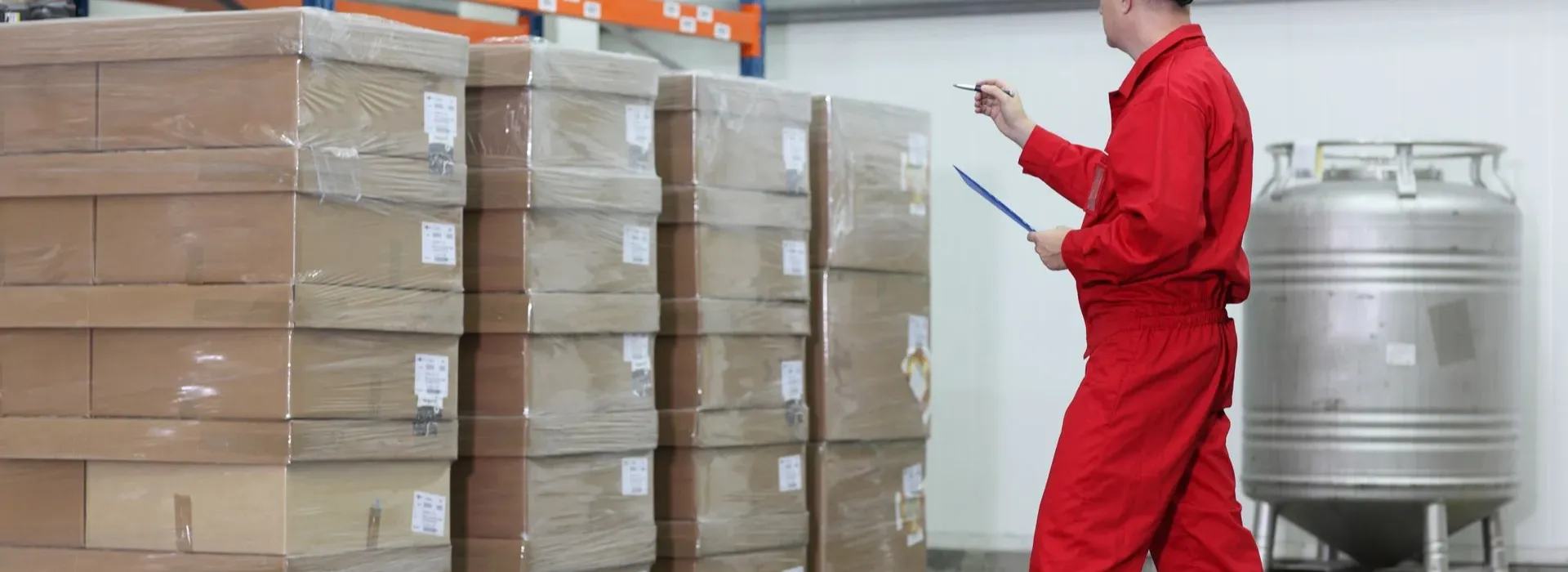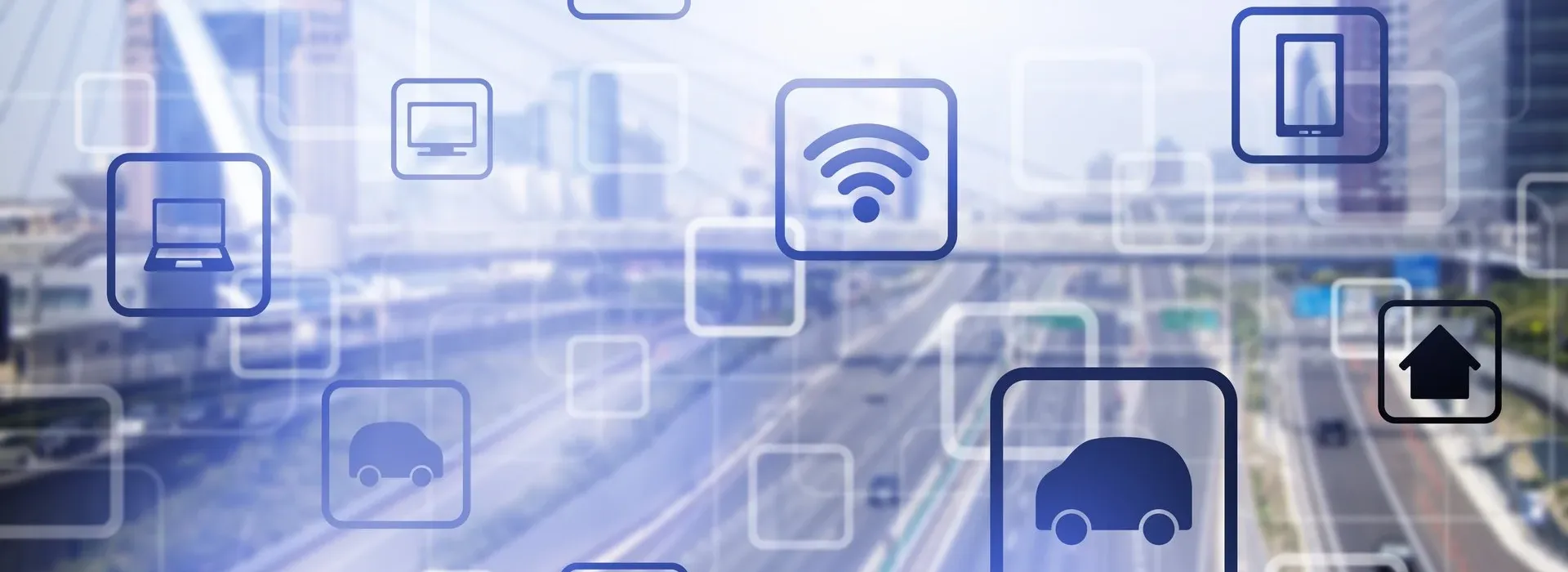Are drones the future of freight technology? Companies like Amazon and Matternet seem to think so.
It’s an interesting time to analyze the potential influence of drones on the future of the logistics industry. Skepticism about the feasibility and legality of incorporating drones in logistics business models is common and understandable. However, logistics industry leaders like Amazon and DHL are already experimenting with this emerging technology—so it’s a great time for logistics business owners to analyze if drone technology might provide a competitive edge in the future.
Download Free Guide: 7 Technologies That Will Change the Warehouse
Only time will tell. In the meantime, let’s analyze some potential benefits and drawbacks in the world of commercial drone technology—as it stands today and as we form a vision for the future of logistics.
Benefits of Drones in Logistics
Reduced Shipping & Operational Costs
Sometime in the next five years, last-mile operators may potentially experience the most benefits in terms of cost reduction.
According to Business Insider, Amazon’s Prime Air delivery drones could be expected to ship packages directly to the customer from the warehouse in 30 minutes or less for as low as $1.00. The chart below shows the substantial difference between Amazon Drones and FedEx and UPS costs (with a much longer delivery time).
As the commercial drone market expands, last-mile operators and small package delivery companies may be the perfect logistics business segment for drones to take off. Due to their characteristics and the current technological limitations of drones (approx. distance up to 15 miles and packages up to 5 pounds), these companies may be the first in the industry to be able to adopt this technology.
The first logistic companies that adopt drones will drastically reduce transportation expenses related to truck capital expenditures such as maintenance, fuel, insurance, and more. By doing so, they might potentially reduce their shipping costs by approximately 83% if we consider that Amazon (a leader in logistics and innovation) could drop shipping costs to about $1 by using drone technology.
Undoubtedly, this will be a game changer and something to truly pay attention to.
Delivery at the Speed of Click
Regarding logistics and drones, Amazon took a big step when they introduced their demo reel. The Internet giant wants to capitalize on its distribution centers worldwide by offering same-day delivery to customers willing to pay a premium.
No longer will an item be picked in a warehouse, put on a carrier’s truck, and sent through traditional channels to a customer. Instead, with a mouse click, the system will arrange for the drone to pick up the order, load it up, and head directly to the consumer without the limitations of delivery routes and many other everyday logistics challenges.
Eliminate Return Hassles
As our daily lives continue to accelerate, we expect nothing else than speed. Not only do we want speed on the delivery time (I want my package and want it now—yes, instant gratification), but if we are not happy with the order, we also want our refund quickly so we can place a new order right away.
Drones not only address the real possibility of reducing return time cycles but also the inconvenience of having to go to the post office and drop off your package.
A heavy-duty drone could pick up damaged goods and return them to the sender. Returns can be processed while the drone is still in transit. Faster turnaround means faster resolution of return claims, so you return to business rather than waiting for order inspection and confirmation.
This will continue to remove ecommerce barriers and take the ecommerce to new levels – and Amazon knows this.
Roadblocks to the Future of Drones in Logistics
Tech Vulnerability
As with any emergent technology, many aspects of drone development are still in the works. Right now, drones don’t have the range to effectively handle all a company’s logistics needs. Currently limited to small packages and short distances, today’s drones are still quite fragile and require highly skilled technicians and operators, which adds to production and use costs. As computer-controlled machines, they’re also vulnerable to hackers looking to steal or destroy the materials entrusted in their care.
The good news is drone developers are in the process of managing and solving such issues. Consider the difference between today’s smartphones and just five years ago. The development of civilian drone technology is on pace to meet or exceed those advancement rates.
Liability Concerns
Another legal area that needs time to develop is where the liability falls regarding drone delivery. Logistics firms spend millions on insurance and ensure operators are certified to cover costs when accidents happen. If a drone crashes, who is responsible for the cost of replacing the product? Or what about a drone falling out of the sky and hurting somebody because of a technical or operational glitch?
Within five years, drones will likely play a significant role in logistics operations all over the world, but their total capacity for improving logistics operations is still to be seen. As the future of drones unfolds, the applicability and feasibility of incorporating drone technology into logistics operations will likely be more cost-effective for last-mile operators and small package services. While logistics professionals certainly aren’t selling their truck fleets overnight, now’s the time to examine the potential future of drone technology.
In addition to drones, here are some of the most promising technologies that have the potential to transform warehousing.
If you want to learn about warehouse digitalization and optimizing warehouse processes, you can follow us on LinkedIn, YouTube, X, or Facebook. If you have other inquiries or suggestions, please contact us here. We’ll be happy to hear from you.












